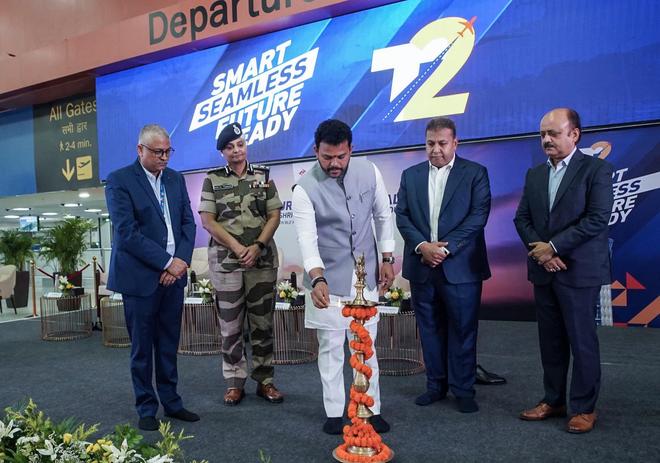Pier C: IGIA to boost T3’s international traffic capacity by December


A view of Flight at Indira Gandhi International Airport in New Delhi; At present, the total international passenger capacity of T3 stands at two crore per annum.
| Photo Credit:
SHIV KUMAR PUSHPAKAR
The Delhi Airport is in the process of boosting the international traffic handling capacity of India’s largest passenger terminal — T3 — to over three crore passengers per annum by December 2025.
At present, the total international passenger capacity of T3 stands at two crore per annum.
However, the continuous overseas expansion of India-based airlines, along with the growing international to international transfers and the increasing inclination towards foreign travel, has led to a rise in global traffic.
Speaking to businessline, Delhi International Airport Limited’s (DIAL) Chief Executive Videh Kumar Jaipuriar said that one of the four piers of T3 — C — will be converted from domestic to international.
“The conversion is being done to increase the terminal’s international capacity to handle growing international passenger traffic,” Jaipuriar told businessline.
“The conversion will be completed by December 2025.”
Accordingly, the conversion will increase T3’s international capacity to 3.2 crore passengers annually.
The Delhi Airport approximately handled a total of 5.8 crore passengers in FY25 out of which 2.2 crore were international.
T2 upgrade
Meanwhile, the domestic traffic load of Pier C has been shifted to the newly refurbished Terminal 2 (T2) of the IGIA.
Last week, DIAL, a GMR Aero-led consortium that maintains and operates IGIA, reopened the upgraded T2.
The upgrade of the 40-year-old terminal, as per DIAL, has been undertaken to optimise flight operations across terminals and enhance passenger convenience, supporting the airport’s growing traffic and expanding airline operations.

Union Minister of Civil Aviation Ram Mohan Naidu Kinjarapu lights the ceremonial lamp during the inauguration of the newly refurbished Terminal 2 of Delhi Airport, in New Delhi on Saturday
| Photo Credit: @RamMNKX/ANI Photo
Besides, the T2 reopening has optimally distributed airline operations across terminals, with IndiGo operating flights numbered 6E 2000–6E 2999, while Air India has shifted around 60 domestic flights from Terminal 3 to Terminal 2.
Together, Air India and IndiGo operate around 120 daily domestic flights from the upgraded T2.
Furthermore, the Pier C conversion to an international concourse is strategic in nature as the airport moves towards becoming a major hub facility.
A hub airport synergises both domestic and international operations in a manner that allows passengers to transit seamlessly between the two.
Such a facility requires well-synchronised flight connectivity to regional airports, in addition to efficient metro, road, and highway access.
Under the hub-and-spoke model, passengers arriving from various smaller cities are grouped together and transferred in a coordinated manner to major hubs such as Delhi for international connections.
At present, India does not have any designated international hub airports. This has resulted in a substantial volume of passenger traffic from India transiting through airports in the Middle East and South-East Asia to reach long-haul destinations.
The aim, industry insiders said, is to make India-based airports as competitive as those in Dubai and Singapore.
Published on October 31, 2025


